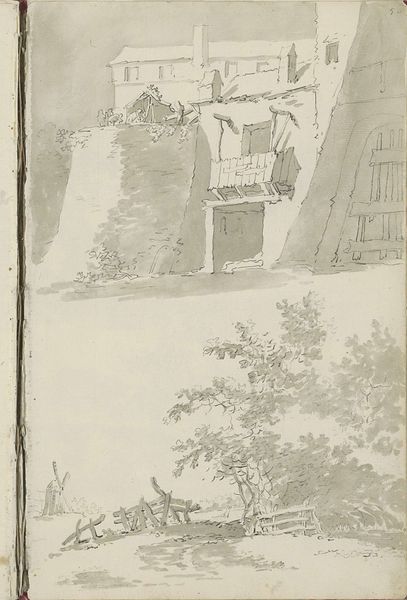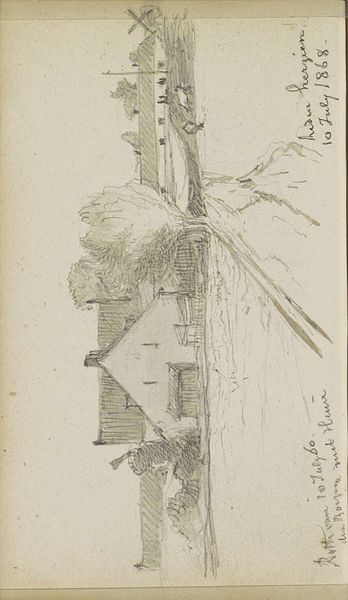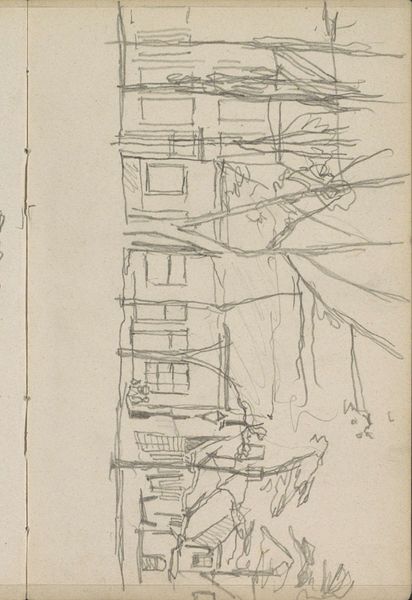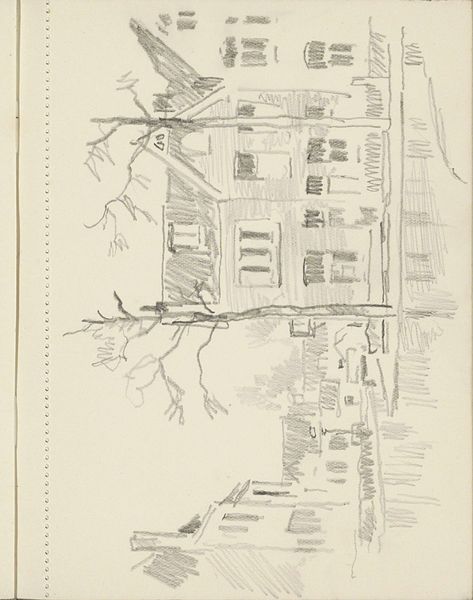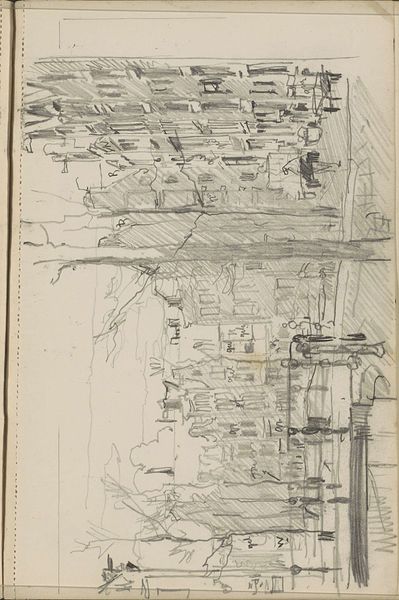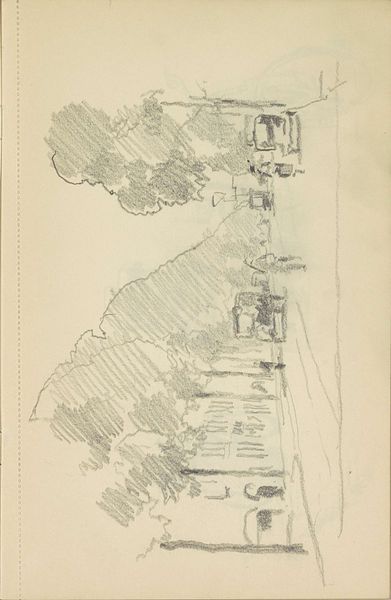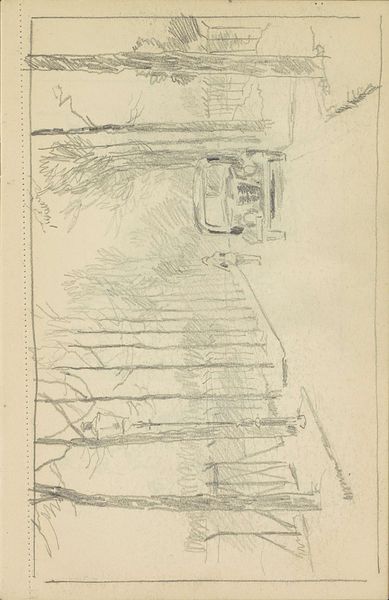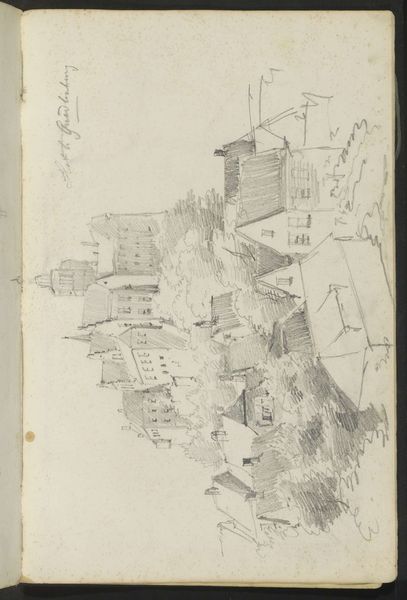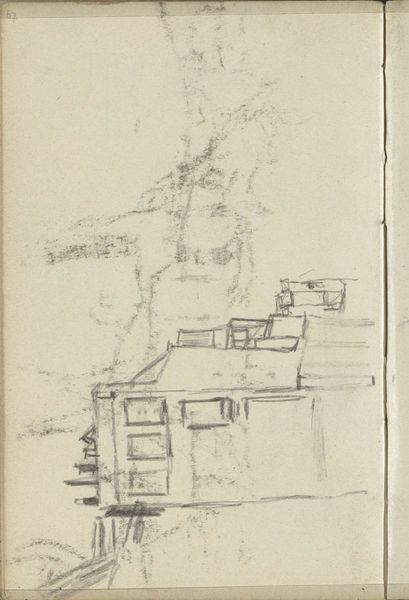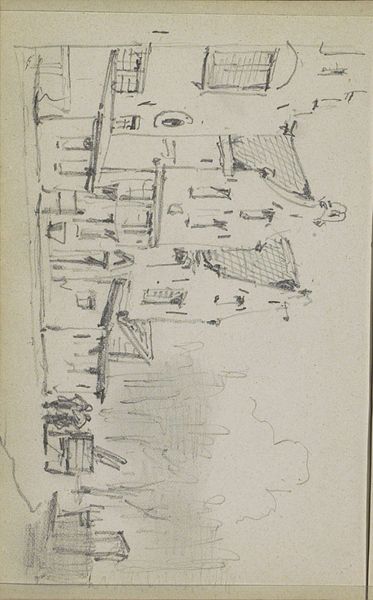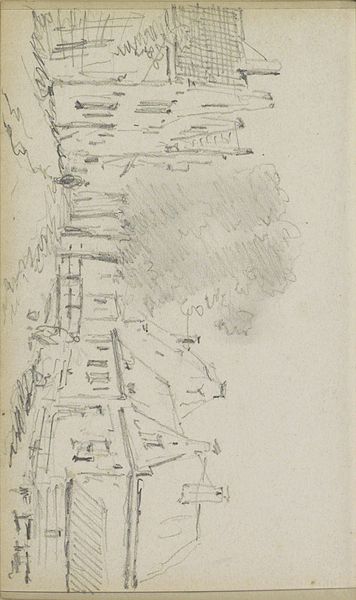
drawing, pencil
#
drawing
#
landscape
#
etching
#
pencil
#
cityscape
#
street
#
realism
Copyright: Rijks Museum: Open Domain
Curator: Cornelis Vreedenburgh created this work, "Houses Along a Canal," sometime between 1890 and 1946. The materials? Pencil and etching on paper, a modest combination for such an evocative piece. Editor: There's a sketch-like quality to it. Ephemeral, almost. The lack of strong contrast makes the houses seem to blend into the misty atmosphere. Curator: Considering the historical context, it speaks to the rapid urbanization occurring in Dutch cities at the turn of the century. The canal houses, likely occupied by the working class, were becoming increasingly vulnerable to demolition and redevelopment. Editor: Yes, but formally, I see a fascinating interplay between the geometric solidity of the buildings and the fluid, almost organic rendering of the water and the trees. The vertical lines of the trees, how they repeat in the architecture. It's a subtle visual rhythm. Curator: It also reminds us to question who gets to narrate the history of urban development. Were these the stories being told, or were they sidelined to celebrate bourgeois growth? This work provides a glimpse into a perspective that mainstream narratives often overlook. Editor: The restricted tonal range emphasizes the flatness of the image surface. The artist invites us to explore how these compositional elements coalesce to create pictorial space. The way that it is more tonal that focusing on contour lines. Curator: Looking through the lens of critical urban theory, we can interpret Vreedenburgh’s portrayal as a subtle form of resistance against the forces of erasure, inviting viewers to recognize the resilience of communities faced with displacement. Editor: For me, the brilliance lies in how Vreedenburgh achieves so much with so little. This is not photorealism; it's a distillation of form and light, inviting the viewer to actively participate in constructing the image. Curator: This artwork serves as a reminder of the power art holds in archiving histories and experiences of those marginalized. Editor: Ultimately, its stark aesthetic creates something that's more than a document: it becomes a resonant composition of enduring beauty.
Comments
No comments
Be the first to comment and join the conversation on the ultimate creative platform.

